Opinion & Analysis
PGA Tour players on the rise and on the decline heading into 2020
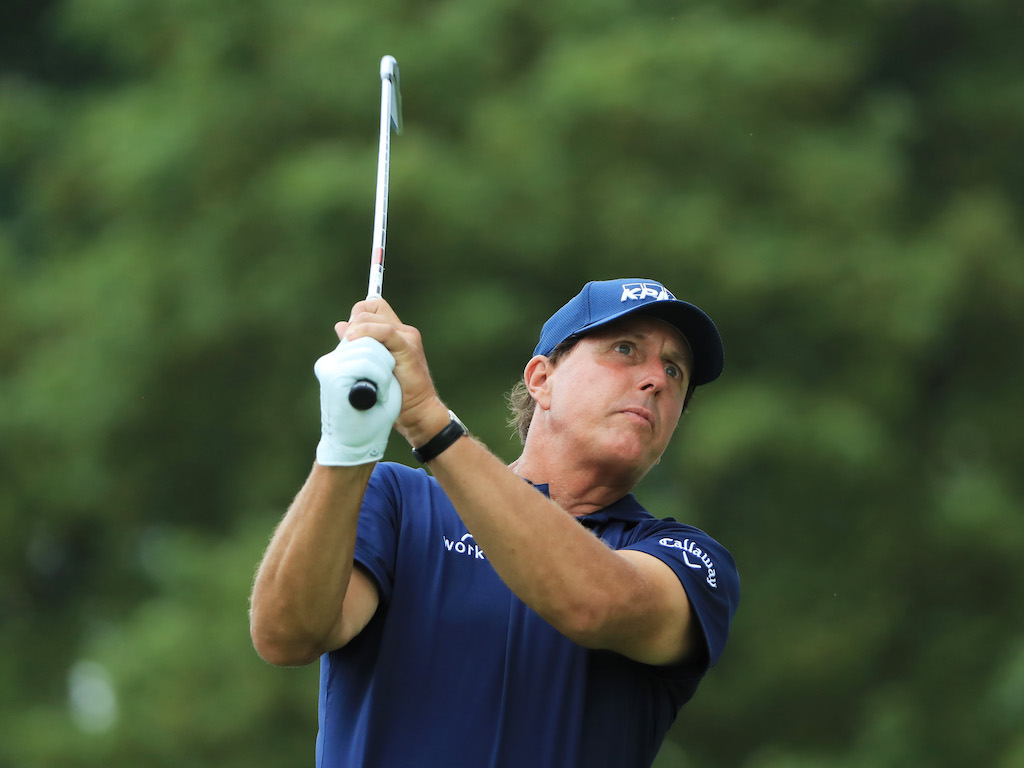
At the end of each season, I compile data on every PGA Tour player and then analyze which players are on the rise and the decline for the upcoming season. There are a number of variables that are historically quality indicators of a golfer’s future performance such as age, club speed, adjusted scoring average, etc. I tend to focus on what I call The Cornerstones of the Game, however, and these Cornerstones include:
- Driving effectiveness
- Red zone play (approach shots from 175-225 yards)
- Short game shots (from 10-20 yards)
- Putting (5-15 feet)
- Ball speed
All that is needed to execute the Cornerstones of the Game is for the player to be in the top half on the PGA Tour in each metric. That’s the beauty of the concept; a player does not need to be dominant in each metric. He can simply be average at each metric and it increases his likelihood of not only having a great season but recording a PGA Tour victory. I can then use the Cornerstones concept to more accurately project players on the rise for the following season.
This past season, there were 10 players that reached The 5 Cornerstones of the Game and they made an average of $4.7 million on the season. Given their success, I focused my analysis more on players that narrowly missed The 5 Cornerstones and their metrics to determine what players will be “on the rise.”
Players on the rise
*The following rankings are based out of 194 players
Joaquin Niemann
The young Chilean golfer reached every one of The 5 Cornerstones of the Game, but he made the least amount of FedEx points of any of the golfers that executed all of the Cornerstones.
This was due to Niemann’s early struggles with the putter. However, his putting improved significantly as the season went by.
The dotted black line in the chart represents Niemann’s trendline and that shows a strong upward trend in his putting performance.
Niemann ranked 107th in adjusted par-5 scoring average, and given his quality of ballstriking and distance off the tee, that should greatly improve. The projections are for him to win soon. If he can continue to improve his putting, particularly from 3-5 feet (he ranked 160th last season) he could be a multiple winner this upcoming season.
Sung Kang
Kang recorded his first victory at the Byron Nelson Championship but flew under the radar for most of the season. He also executed The 5 Cornerstones of the Game.
Back in 2017, Kang almost executed The 5 Cornerstones, but I was lukewarm to putting him on the list of Players on the Rise as the one cornerstone he failed to reach was red zone play, and that’s too important of a metric to miss out on.
Kang struggled in the 2018 season, but his red zone play greatly improved. In the meantime, his driving greatly suffered. He continued to struggle with his driving early in the 2019 season but made great strides right around the Byron Nelson and ended the season ranked 80th in driving effectiveness. Meanwhile, his red zone play has continued to be strong, and he’s a sound short game performer from 10-20 yards and putter from 5-15 feet.
While I am a little more on the fence with Kang, given his putrid performance from the yellow zone and generally inconsistent play, his putting suffered from ranking 181st on putts from 25-plus feet. That is more likely to move towards the mean and greatly improve his putts gained next season. He’s also 32 years old, which is a prime age for Tour players hit their peak performance of their career.
Sepp Straka
Straka had a good rookie campaign striking the ball and was a competent putter. The only Cornerstone that Straka failed to execute was short game shots from 10-20 yards. However, we can see that as the season went by Straka’s short game improved
That’s also recognizing that short game around the green has a weaker correlation to success on Tour than most of the other Cornerstones like driving, red zone play and putting from 5-15 feet.
Straka should improve greatly on par-5’s (104th last season). He made a lot of birdies last year (25th in adjusted birdie rate), but made a ton of bogeys (155th). These numbers project well at tournaments that are birdie fests like Palm Springs or courses that are relatively easy on shots around the green such as Harbour Town.
Sam Ryder
Ryder only missed The 5 Cornerstones with a poor performance from 10-20 yards. He’s an excellent putter and iron-play performer, and that is usually the parts of the game that the eventual winners perform best from.
Wyndham Clark
One of the new metrics I’ve created is called “power-to-putting.” This is a combination of the player’s putts gained ranking and their adjusted driving distance ranking. Earlier this year I wrote an article here about where exactly distance helps with a golfer’s game. In essence, the longer off the tee a golfer is the more likely they will have shorter length birdie putts on average. That’s why long hitters like Bubba Watson can make a lot of money despite putting poorly and why shorter hitters like Brian Gay have to putt well in order to be successful.
The “honey pot” is for a golfer that hits it long and putts well. This means they will sink a ton of birdie putts because they are having easier putts to make and they have the requisite putting skill to make them.
Clark finished first in power-to-putting (Rory McIlroy finished second). On top of that, he was an excellent performer from 10-20 yards which is usually the last step in a long ball hitter becoming an elite performer. Clark’s iron play was very poor and that downgrades his chances of winning on Tour. But, with his length, putting, and short game, he can very well get four days of decent approach shot play and win handily.
Players on the decline
Charley Hoffman
Hoffman ranked 64th in FedEx points but was 139th in adjusted scoring average. Most of Hoffman’s metrics were not very good, but he was a superb performer from the yellow and red zone. The other concerning part of Hoffman is his age: He is at the point of his career that player performance tends to drop-off the most. He only made two of his last seven cuts this past season with the best finish of T51 at The Open Championship.
J.B. Holmes
Holmes finished 166th in adjusted scoring average and was greatly helped by having a favorable schedule as he ranked 21st in purse size per event. The best thing Holmes has going for him is his distance off the tee. He also had a good season around the green that helps long hitters like Holmes when they hit foul balls off the tee.
After that, Holmes did not do much of anything well. He was 179th in adjusted missed fairway–other percentage (aka hitting foul balls off the tee) and his putting was horrendous and doesn’t appear to be bouncing back anytime soon.
Patton Kizzire
Kizzire only made two of his last 11 cuts last season, and it’s easy to see why with his ballstriking struggles. It also doesn’t help that he was poor from 10-20 yards. He’s one of the elite putters on Tour, but elite putting only helps a player so much in the big leagues.
Phil Mickelson
The biggest positive for Mickelson is his newfound power that he exhibited last year. He will also play a favorable schedule as he ranked 16th in purse size per event and has lifetime exempt status on Tour.
For fantasy golf owners, I would be averse to picking Mickelson in the short term. The question with Lefty is if his newfound distance caused him issues with his iron play, short game and putting, or if that is just a temporary slump that once he works thru those issues with his newfound speed, he may be winning tournaments again. But at his age, history is not in his favor.
Francesco Molinari
Molinari turns 37-years-old in November. There’s still plenty of years for good golf, but Molnari’s lack of power and routine struggles with the putter means that he needs to have impeccable driving and iron play in order to be competitive in big tournaments and the majors. Last season he was an average driver of the ball and he was below average from the red zone.
The positive for Molinari is that he has typically been an impeccable ballstriker, so the issues in 2019 may have been a one-time slump. And while he putted poorly, he putted well from 5-15 feet. He ranked 184th on putts from 15-25 feet and 157th on putts from 25-plus feet, and those are more likely to progress towards the mean over time and help his overall putting.
But, Molinari has never been a great putter, and at his age, it will be very difficult to keep up with his impeccable ballstriking to get back to the winner’s circle.
- LIKE32
- LEGIT3
- WOW3
- LOL1
- IDHT2
- FLOP9
- OB3
- SHANK10
19th Hole
Vincenzi’s 2024 Zurich Classic of New Orleans betting preview

The PGA TOUR heads to New Orleans to play the 2023 Zurich Classic of New Orleans. In a welcome change from the usual stroke play, the Zurich Classic is a team event. On Thursday and Saturday, the teams play best ball, and on Friday and Sunday the teams play alternate shot.
TPC Louisiana is a par 72 that measures 7,425 yards. The course features some short par 4s and plenty of water and bunkers, which makes for a lot of exciting risk/reward scenarios for competitors. Pete Dye designed the course in 2004 specifically for the Zurich Classic, although the event didn’t make its debut until 2007 because of Hurricane Katrina.
Coming off of the Masters and a signature event in consecutive weeks, the field this week is a step down, and understandably so. Many of the world’s top players will be using this time to rest after a busy stretch.
However, there are some interesting teams this season with some stars making surprise appearances in the team event. Some notable teams include Patrick Cantlay and Xander Schauffele, Rory McIlroy and Shane Lowry, Collin Morikawa and Kurt Kitayama, Will Zalatoris and Sahith Theegala as well as a few Canadian teams, Nick Taylor and Adam Hadwin and Taylor Pendrith and Corey Conners.
Past Winners at TPC Louisiana
- 2023: Riley/Hardy (-30)
- 2022: Cantlay/Schauffele (-29)
- 2021: Leishman/Smith (-20)
- 2019: Palmer/Rahm (-26)
- 2018: Horschel/Piercy (-22)
- 2017: Blixt/Smith (-27)
2024 Zurich Classic of New Orleans Picks
Tom Hoge/Maverick McNealy +2500 (DraftKings)
Tom Hoge is coming off of a solid T18 finish at the RBC Heritage and finished T13 at last year’s Zurich Classic alongside Harris English.
This season, Hoge is having one of his best years on Tour in terms of Strokes Gained: Approach. In his last 24 rounds, the only player to top him on the category is Scottie Scheffler. Hoge has been solid on Pete Dye designs, ranking 28th in the field over his past 36 rounds.
McNealy is also having a solid season. He’s finished T6 at the Waste Management Phoenix Open and T9 at the PLAYERS Championship. He recently started working with world renowned swing coach, Butch Harmon, and its seemingly paid dividends in 2024.
Keith Mitchell/Joel Dahmen +4000 (DraftKings)
Keith Mitchell is having a fantastic season, finishing in the top-20 of five of his past seven starts on Tour. Most recently, Mitchell finished T14 at the Valero Texas Open and gained a whopping 6.0 strokes off the tee. He finished 6th at last year’s Zurich Classic.
Joel Dahmen is having a resurgent year and has been dialed in with his irons. He also has a T11 finish at the PLAYERS Championship at TPC Sawgrass which is another Pete Dye track. With Mitchell’s length and Dahmen’s ability to put it close with his short irons, the Mitchell/Dahmen combination will be dangerous this week.
Taylor Moore/Matt NeSmith +6500 (DraftKings)
Taylor Moore has quickly developed into one of the more consistent players on Tour. He’s finished in the top-20 in three of his past four starts, including a very impressive showing at The Masters, finishing T20. He’s also finished T4 at this event in consecutive seasons alongside Matt NeSmith.
NeSmith isn’t having a great 2024, but has seemed to elevate his game in this format. He finished T26 at Pete Dye’s TPC Sawgrass, which gives the 30-year-old something to build off of. NeSmith is also a great putter on Bermudagrass, which could help elevate Moore’s ball striking prowess.
- LIKE7
- LEGIT3
- WOW1
- LOL1
- IDHT0
- FLOP3
- OB1
- SHANK1
19th Hole
Vincenzi’s 2024 LIV Adelaide betting preview: Cam Smith ready for big week down under

After having four of the top twelve players on the leaderboard at The Masters, LIV Golf is set for their fifth event of the season: LIV Adelaide.
For both LIV fans and golf fans in Australia, LIV Adelaide is one of the most anticipated events of the year. With 35,000 people expected to attend each day of the tournament, the Grange Golf Club will be crawling with fans who are passionate about the sport of golf. The 12th hole, better known as “the watering hole”, is sure to have the rowdiest of the fans cheering after a long day of drinking some Leishman Lager.
The Grange Golf Club is a par-72 that measures 6,946 yards. The course features minimal resistance, as golfers went extremely low last season. In 2023, Talor Gooch shot consecutive rounds of 62 on Thursday and Friday, giving himself a gigantic cushion heading into championship Sunday. Things got tight for a while, but in the end, the Oklahoma State product was able to hold off The Crushers’ Anirban Lahiri for a three-shot victory.
The Four Aces won the team competition with the Range Goats finishing second.
*All Images Courtesy of LIV Golf*
Past Winners at LIV Adelaide
- 2023: Talor Gooch (-19)
Stat Leaders Through LIV Miami
Green in Regulation
- Richard Bland
- Jon Rahm
- Paul Casey
Fairways Hit
- Abraham Ancer
- Graeme McDowell
- Henrik Stenson
Driving Distance
- Bryson DeChambeau
- Joaquin Niemann
- Dean Burmester
Putting
- Cameron Smith
- Louis Oosthuizen
- Matt Jones
2024 LIV Adelaide Picks
Cameron Smith +1400 (DraftKings)
When I pulled up the odds for LIV Adelaide, I was more than a little surprised to see multiple golfers listed ahead of Cameron Smith on the betting board. A few starts ago, Cam finished runner-up at LIV Hong Kong, which is a golf course that absolutely suits his eye. Augusta National in another course that Smith could roll out of bed and finish in the top-ten at, and he did so two weeks ago at The Masters, finishing T6.
At Augusta, he gained strokes on the field on approach, off the tee (slightly), and of course, around the green and putting. Smith able to get in the mix at a major championship despite coming into the week feeling under the weather tells me that his game is once again rounding into form.
The Grange Golf Club is another course that undoubtedly suits the Australian. Smith is obviously incredibly comfortable playing in front of the Aussie faithful and has won three Australian PGA Championship’s. The course is very short and will allow Smith to play conservative off the tee, mitigating his most glaring weakness. With birdies available all over the golf course, there’s a chance the event turns into a putting contest, and there’s no one on the planet I’d rather have in one of those than Cam Smith.

Louis Oosthuizen +2200 (DraftKings)
Louis Oosthuizen has simply been one of the best players on LIV in the 2024 seas0n. The South African has finished in the top-10 on the LIV leaderboard in three of his five starts, with his best coming in Jeddah, where he finished T2. Perhaps more impressively, Oosthuizen finished T7 at LIV Miami, which took place at Doral’s “Blue Monster”, an absolutely massive golf course. Given that Louis is on the shorter side in terms of distance off the tee, his ability to play well in Miami shows how dialed he is with the irons this season.
In addition to the LIV finishes, Oosthuizen won back-to-back starts on the DP World Tour in December at the Alfred Dunhill Championship and the Mauritus Open. He also finished runner-up at the end of February in the International Series Oman. The 41-year-old has been one of the most consistent performers of 2024, regardless of tour.
For the season, Louis ranks 4th on LIV in birdies made, T9 in fairways hit and first in putting. He ranks 32nd in driving distance, but that won’t be an issue at this short course. Last season, he finished T11 at the event, but was in decent position going into the final round but fell back after shooting 70 while the rest of the field went low. This season, Oosthuizen comes into the event in peak form, and the course should be a perfect fit for his smooth swing and hot putter this week.

- LIKE12
- LEGIT3
- WOW1
- LOL1
- IDHT0
- FLOP1
- OB1
- SHANK1
Opinion & Analysis
The Wedge Guy: What really makes a wedge work? Part 1

Of all the clubs in our bags, wedges are almost always the simplest in construction and, therefore, the easiest to analyze what might make one work differently from another if you know what to look for.
Wedges are a lot less mysterious than drivers, of course, as the major brands are working with a lot of “pixie dust” inside these modern marvels. That’s carrying over more to irons now, with so many new models featuring internal multi-material technologies, and almost all of them having a “badge” or insert in the back to allow more complex graphics while hiding the actual distribution of mass.
But when it comes to wedges, most on the market today are still single pieces of molded steel, either cast or forged into that shape. So, if you look closely at where the mass is distributed, it’s pretty clear how that wedge is going to perform.
To start, because of their wider soles, the majority of the mass of almost any wedge is along the bottom third of the clubhead. So, the best wedge shots are always those hit between the 2nd and 5th grooves so that more mass is directly behind that impact. Elite tour professionals practice incessantly to learn to do that consistently, wearing out a spot about the size of a penny right there. If impact moves higher than that, the face is dramatically thinner, so smash factor is compromised significantly, which reduces the overall distance the ball will fly.
Every one of us, tour players included, knows that maddening shot that we feel a bit high on the face and it doesn’t go anywhere, it’s not your fault.
If your wedges show a wear pattern the size of a silver dollar, and centered above the 3rd or 4th groove, you are not getting anywhere near the same performance from shot to shot. Robot testing proves impact even two to three grooves higher in the face can cause distance loss of up to 35 to 55 feet with modern ‘tour design’ wedges.
In addition, as impact moves above the center of mass, the golf club principle of gear effect causes the ball to fly higher with less spin. Think of modern drivers for a minute. The “holy grail” of driving is high launch and low spin, and the driver engineers are pulling out all stops to get the mass as low in the clubhead as possible to optimize this combination.
Where is all the mass in your wedges? Low. So, disregarding the higher lofts, wedges “want” to launch the ball high with low spin – exactly the opposite of what good wedge play requires penetrating ball flight with high spin.
While almost all major brand wedges have begun putting a tiny bit more thickness in the top portion of the clubhead, conventional and modern ‘tour design’ wedges perform pretty much like they always have. Elite players learn to hit those crisp, spinny penetrating wedge shots by spending lots of practice time learning to consistently make contact low in the face.
So, what about grooves and face texture?
Grooves on any club can only do so much, and no one has any material advantage here. The USGA tightly defines what we manufacturers can do with grooves and face texture, and modern manufacturing techniques allow all of us to push those limits ever closer. And we all do. End of story.
Then there’s the topic of bounce and grinds, the most complex and confusing part of the wedge formula. Many top brands offer a complex array of sole configurations, all of them admittedly specialized to a particular kind of lie or turf conditions, and/or a particular divot pattern.
But if you don’t play the same turf all the time, and make the same size divot on every swing, how would you ever figure this out?
The only way is to take any wedge you are considering and play it a few rounds, hitting all the shots you face and observing the results. There’s simply no other way.
So, hopefully this will inspire a lively conversation in our comments section, and I’ll chime in to answer any questions you might have.
And next week, I’ll dive into the rest of the wedge formula. Yes, shafts, grips and specifications are essential, too.
- LIKE32
- LEGIT7
- WOW1
- LOL1
- IDHT2
- FLOP3
- OB1
- SHANK3
-

 19th Hole2 weeks ago
19th Hole2 weeks agoDave Portnoy places monstrous outright bet for the 2024 Masters
-

 19th Hole2 weeks ago
19th Hole2 weeks agoTiger Woods arrives at 2024 Masters equipped with a putter that may surprise you
-

 19th Hole2 days ago
19th Hole2 days agoJustin Thomas on the equipment choice of Scottie Scheffler that he thinks is ‘weird’
-

 19th Hole2 days ago
19th Hole2 days ago‘Absolutely crazy’ – Major champ lays into Patrick Cantlay over his decision on final hole of RBC Heritage
-

 19th Hole3 weeks ago
19th Hole3 weeks agoReport: Tiger Woods has ‘eliminated sex’ in preparation for the 2024 Masters
-

 19th Hole1 week ago
19th Hole1 week agoTwo star names reportedly blanked Jon Rahm all week at the Masters
-

 19th Hole1 week ago
19th Hole1 week agoReport: LIV Golf identifies latest star name they hope to sign to breakaway tour
-

 19th Hole1 week ago
19th Hole1 week agoNeal Shipley presser ends in awkward fashion after reporter claims Tiger handed him note on 8th fairway

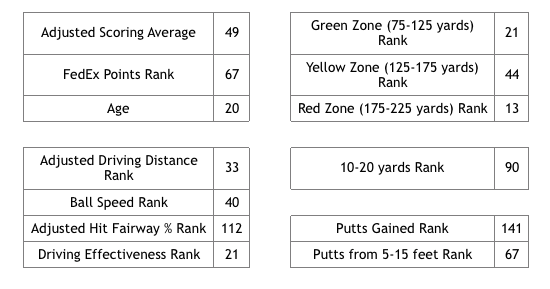
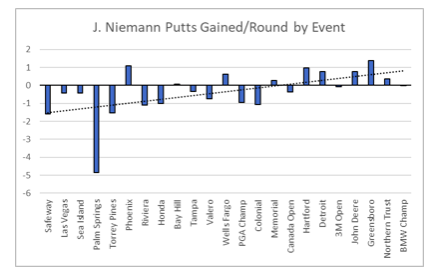
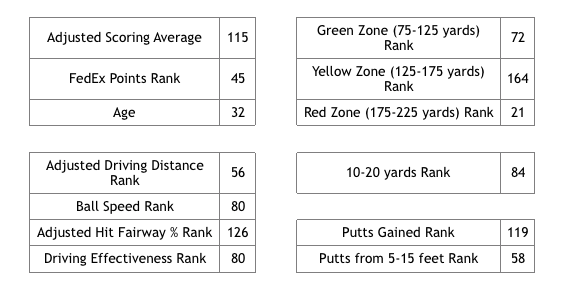
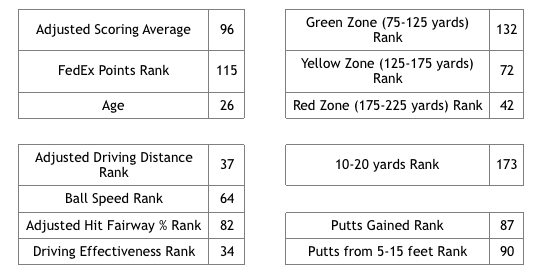
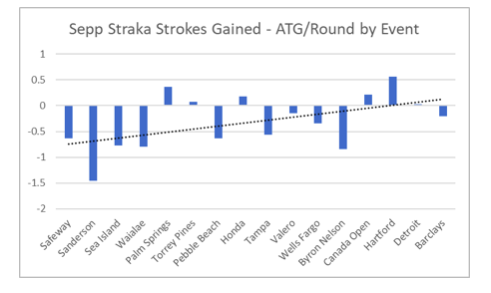
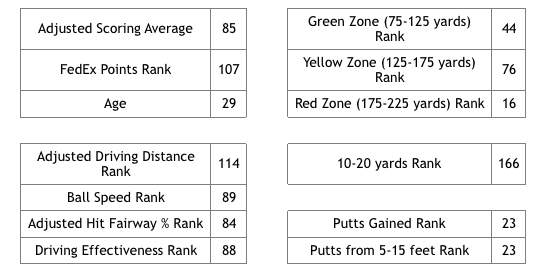
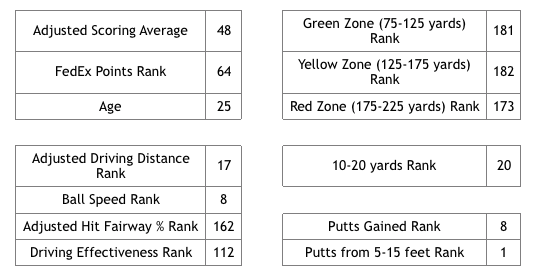
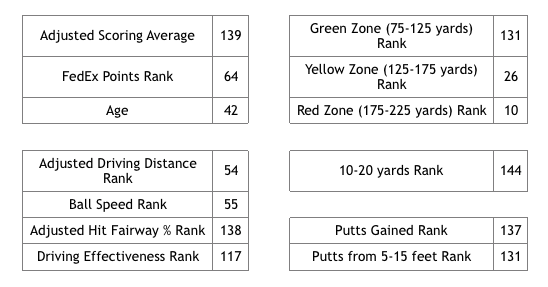
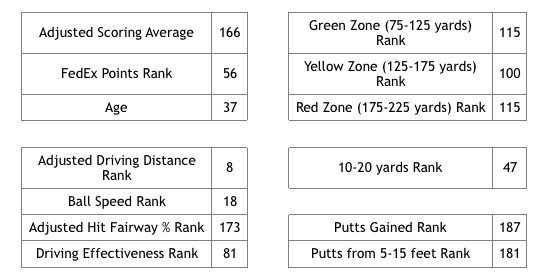
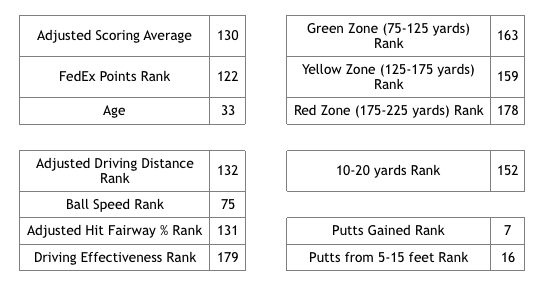
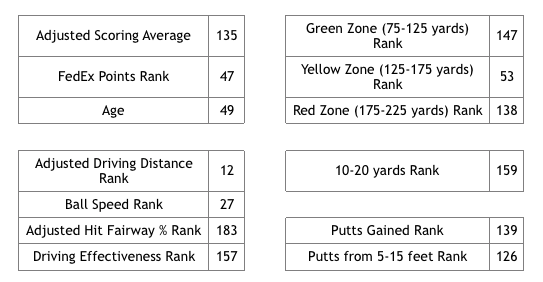
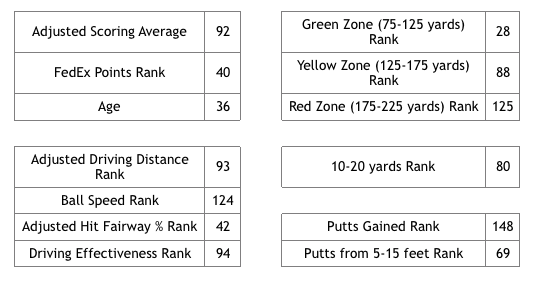






















Glum
Sep 15, 2019 at 5:27 am
That’s just beautiful! Said like Glum from Gulliver’s Travels!
Tom Franks
Sep 14, 2019 at 6:49 pm
Where’s Kuch? Kduooooooooooooche, kduooooooooooooooche, kduoooooooooooooche, kduooooooooooooche, kduooooooooooooooche, kduoooooooooooooche, kduooooooooooooooche, kduoooooooooooooche, kduooooooooooooooche. MK sucks donkey.
Paul
Sep 14, 2019 at 10:06 pm
Really good input, Tom.